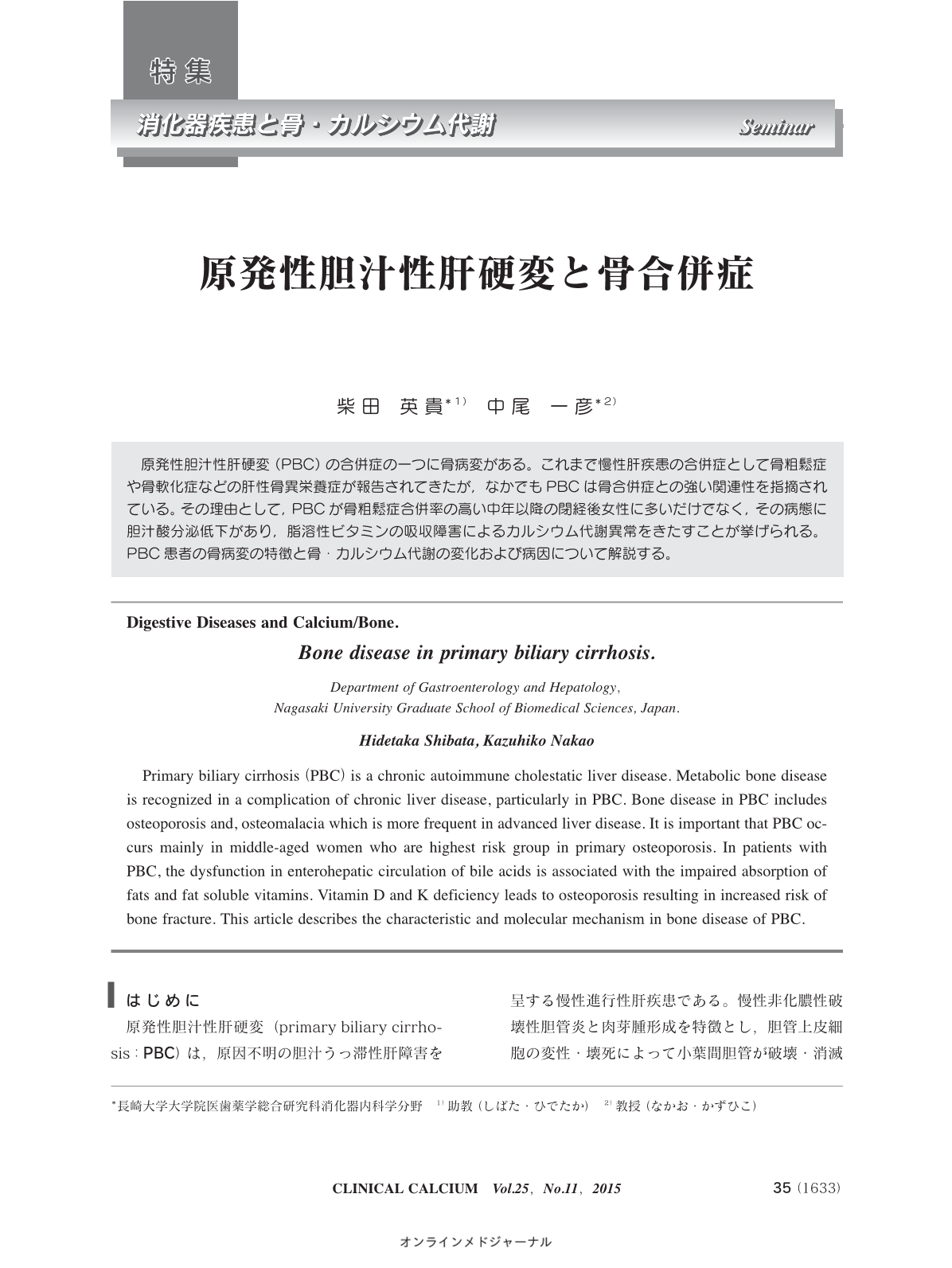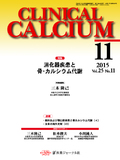Japanese
English
- 有料閲覧
- Abstract 文献概要
- 1ページ目 Look Inside
- 参考文献 Reference
原発性胆汁性肝硬変(PBC)の合併症の一つに骨病変がある。これまで慢性肝疾患の合併症として骨粗鬆症や骨軟化症などの肝性骨異栄養症が報告されてきたが,なかでもPBCは骨合併症との強い関連性を指摘されている。その理由として,PBCが骨粗鬆症合併率の高い中年以降の閉経後女性に多いだけでなく,その病態に胆汁酸分泌低下があり,脂溶性ビタミンの吸収障害によるカルシウム代謝異常をきたすことが挙げられる。PBC患者の骨病変の特徴と骨・カルシウム代謝の変化および病因について解説する。
Primary biliary cirrhosis(PBC)is a chronic autoimmune cholestatic liver disease. Metabolic bone disease is recognized in a complication of chronic liver disease, particularly in PBC. Bone disease in PBC includes osteoporosis and, osteomalacia which is more frequent in advanced liver disease. It is important that PBC occurs mainly in middle-aged women who are highest risk group in primary osteoporosis. In patients with PBC, the dysfunction in enterohepatic circulation of bile acids is associated with the impaired absorption of fats and fat soluble vitamins. Vitamin D and K deficiency leads to osteoporosis resulting in increased risk of bone fracture. This article describes the characteristic and molecular mechanism in bone disease of PBC.



